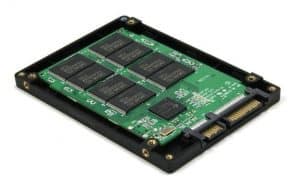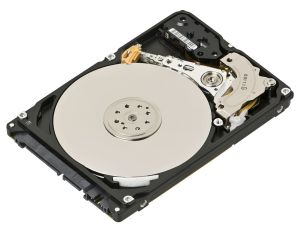
Buying a new computer? Consider your options for storage
Are you buying a new computer? Most performance problems are caused by the computer waiting to retrieve data from storage. For storage, manufacturers will install either an SSD or a hard drive, and itro strongly recommends buying a machine with a Solid-State Drive (SSD) possessing a minimum capacity of 240 GB.
Two options for storage:
- Solid-State Drives (SSD) – itro’s recommendation
- Hard drives
Key Points:
- Solid-State Drives have no moving parts, meaning that they’re less fragile than a standard hard drive
- SSDs are incredibly fast and increase a computer’s longevity by reducing speed degradation as it ages
- Solid-State Drives store all data electronically rather than magnetically like a hard drive
- Always ask the salesperson whether a computer has an SSD and its size
- itro recommends a minimum size of 240 GB
- Most laptops costing more than $1,500 have an SSD fitted but check before purchasing
Why?
When purchasing a new computer, a key consideration is storage. In the past, the adage ‘bigger is better’ held true, but in the last five years SSDs – or Solid-State Drives – continue to make strong inroads in the technology sector.
It’s not hard to see why. SSDs are fundamentally better than standard hard drives in many ways; they’re incredibly fast, physically resilient, and less prone to failure. It’s even clearer when you look at the physical differences between a hard drive and an SSD:
| SSD | Hard drive |
 |
 |
Hard drive
A hard drive is an incredible and intricate mechanical device, with many points of failure. The spindle contains up to five platters which spin anywhere from 5,400 to 15,000 RPM. At those speeds, you can feel the gyroscopic effect when picking up a powered drive. The actuator arm contains the read-write head, which – funnily enough – is the mechanism used to read and write data on the drive. It works by either converting an electrical signal to a magnetic field (Writing to the drive) or converting a magnetic field to an electrical signal (Reading from the drive). The actuator arm in most drives takes between 15 – 20 milliseconds to travel from the outermost to innermost edges, meaning it can move back and forth 25 times every second. The design is so precise that a speck of dust can cause irrevocable harm to a drive.
Compare that to an SSD. There are no mechanical parts of which to speak, as ‘Solid-State’ refers to a type of storage which only utilises electronic circuits to store digital information. RAM is also a form of solid-state storage but, unlike RAM, the NAND Flash memory utilised in SSDs is non-volatile; meaning that your data is safe after power loss. They work by building billions of tiny gated cells, in which they can store electrons. A cell with a stored electron represents a 1, and a cell without an electron represents a 0.
Advantages of SSDs
Such a set-up has many advantages. Defragging is a necessary on a traditional hard drive to maintain performance, as it ensures that the drive stores similar data in continuous blocks to reduce seek time (Seek time is how long it takes the drive to locate and read your data). Not only is defragging unnecessary with an SSD, but it actively damages the device. In best case scenarios, seek times on hard drives range between 4 – 5 milliseconds, while SSDs come in under .1 milliseconds. Most hard drives can read and write data at around 100 megabytes per second, while modern high-end SSDs can punch above 1 gigabyte per second.
Disadvantages of SSDs
However, there are disadvantages in some use cases. Solid-state drives are much more expensive per gigabyte than hard drives – Samsung’s 4TB SSD costs $2,000, while you can purchase a 4 TB hard drive for $159. When you require bulk storage, it’s much more cost effective to buy a hard drive. That said, you can mix and match SSDs and hard drives. Most enthusiasts have an SSD onto which they install Windows and applications while using a hard drive for storing videos and photos.
Flash also has limited ‘write endurance.’ Writing to flash memory affects a cell’s ability to store electrons, and over time a cell will entirely lose the ability to save data. Write endurance isn’t a major issue for the average person with a modern drive, as manufacturers use a few different technologies – wear levelling and over-provisioning – to mitigate the problem.
Also, not all flash memory is created equal. Cheap flash – normally found in USB thumb drives – can have exceedingly poor read and write performance. Many sub $20 so-called ‘Superspeed’ USB 3 drives barely reach read-write speeds of 10 megabytes per second, meaning that it’d take around two hours to fill a 64 GB flash drive.
What does itro sell?
Itro no longer sells computers and laptops without an SSD. If you’re thinking about purchasing a new device on your own, ensuring that there’s a solid-state drive in the computer ought to be your top priority.

